

Abstract
This study examined gender differences in computer technology achievement. The setting was a central Georgia middle school. The participants were an intact group of 8th grade students in an Exploration of Technology class. A total of 64 children (32 boys and 32 girls), aged 13 and 14 years old, participated in this study. Scores from a pretest and posttest of male and female students were compared using Analysis of Covariance with repeated measures and gender as the factor. Analysis of data showed that there were gender differences in computer technology achievement. The findings were statistically significant. The results confirmed earlier findings and added to our knowledge about achievement in computer technology.
Introduction
Computers are commonly identified with the areas of mathematics and science, areas in which for many years there has been a widespread concern about sex-related differences. It is not surprising, therefore, to find similar differences emerging in the area of computers. Much research and discussion have gone into investigating gender differences in students at all grade levels in learning and achievement in the areas of mathematics, science, and technology. The research literature on computer education has examined gender differences since the early 1980s (Young, 2000). In the educational research literature, various factors associated with gender differences have been explored in connection to computer technology achievement.
Many factors in and outside the classroom result in girls being turned away from computer technology (Koch, 1994). These factors include the media depicting men as experts in technology, societal expectations of different goals for boys and girls, the structure of learning tasks, the nature of feedback in performance situations, and the organization of classroom seating. Because these factors are often subtle, they go unnoticed. It is little wonder why girls are not interested in computer technology.
Research on gender differences in behavior toward computers has increased in the past 20 years. Numerous articles have been written focusing on differences regarding computer aptitude and actual computer use. Kay (1992) defined aptitude in respect to general application software, awareness, experience, terminology, general programming, word processing, and games.
In a pilot study by Pryor in 1995, boys achieved much better results than girls. For boys, the application of the finished task was less likely to be questioned and a sense of purpose came from the achievement of the goal. The process was important because it allowed boys to work with hardware and make things happen. For girls, the goal was important if it had some application and seemed to be leading somewhere. The process was significant to girls because it gave them a sense of camaraderie with a partner. Statistics in this case study showed that more boys than girls use computers.
Gender differences in response to computers have been widely reported by various experts in the educational field. Computers are not inherently biased. However, the way computers are used can often reinforce gender bias. Parents and teachers should be sensitive to cultural biases and strive to expose both sexes to the advantages of computer technology. New ideas should be devised in order to promote greater gender equity in computer use and help close the technological gap between boys and girls (Dorman, 1998).
Educators need to link the curriculum and technology with student interests. Both male and female students use computer applications that can be linked to the educational setting, such as word processing, accessing information, and completing homework, reports, and projects. But students also use computers for communication, self-expression, and personal interest (Houtz, 2001). How females relate to technology and the value they bring to technology are often ignored or devalued in education. Once educators begin to understand how girls lose interest in technology and recognize the different learning styles of each gender, strides can be made in supporting girls and women in choosing computer-related careers and using computers as a medium of expression.
Previous research has consistently documented gender differences in computer achievement. From these findings, one would expect to see males with higher achievement levels than females. The purpose of this study was to determine if there were gender differences in computer achievement based on the results from repeated testing measures. This study investigated gender differences in computer technology achievement.
Experiment 1
Method
Participants.
The participants were an intact group of 8th grade students in an Explorations of Technology class from a central Georgia middle school winter semester. The ethnicity information for the 1,072 students attending this central Georgia middle school was as follows: 61% were African-American, 2% were Asian, 36% were Caucasian and 1% was Hispanic. There were 549 students (51%) that received free or reduced lunch. A total of 64 children (32 boys and 32 girls), aged 13 and 14 years old, participated in this study. Students were matched based on reading scores from the Georgia Criterion-Referenced Competency Test and placed into same sex pairs.
Measurement Instrument.
A pretest was given to investigate possible differences between males and females in terms of computer technology achievement. The pretest consisted of 10 multiple-choice questions published by Learning Labs; Inc. Students were given the same 10-question multiple-choice pretest as a posttest measure.
Learning Labs, Inc. (P.O. Box 1419 Calhoun, GA, 30703) is an educational resource business with hundreds of technology products on the market. Their products have been adopted and implemented in well over a thousand schools nationwide. Learning Labs, Inc. produces exceptional technology-based educational packages for both middle and high school levels.
Procedures.
The researcher has taught Explorations in Technology to 8th graders at Weaver Middle School since January 1997. According to the curriculum guide for technology education developed by the Georgia Department of Education in 1988, the purpose of the middle school industrial arts/technology program is to provide students an orientation and exploration into the technologies of communication, manufacturing and construction, and energy and power control. A further purpose is to augment the students' base of concrete experiences providing better foundation for the development and understanding of more abstract academic concepts.
In the Exploration in Technology class, students worked independently through 3 technology units per semester. Pairs of students completed 9 self-directed activities from a lab manual developed by Learning Labs, Inc. without teacher instruction. All the units began with a brief history of the subject followed by 8 days of step by step instruction and were concluded with a problem solving activity. Each area included a pretest and posttest. Students completed a set of study questions and vocabulary words while progressing through the unit. In addition, all units included multiple worksheets, experiments, demonstrations, and problem solving activities.
At the beginning of winter semester, same sex students were randomly paired in 4 Explorations of Technology classes. Students were given a pretest on animation and assigned to work in the animation lab area (module). Over a period of 9 school days, students spent 40 minutes a day working on the student directed activities found in the animation lab manual compiled by Learning Labs, Inc.
In the animation module students learned about the history of animation and gained a working knowledge of how to operate a computer animation system. Students generated numerous animation sequences by utilizing an existing library of computerized actors as well as actors they created from scratch. Students also used these animated sequences to produce a videotape with animation and sound.
Students worked in pairs to complete the activities and were instructed to solve problems within their group. All classes had the same assignments. Academic objectives were the same for each class. All tests measuring achievement were identical.
Study Design and Data Analysis.
This was a casual-comparative research study. This design involved selecting 2 groups differing on an independent variable (gender) and comparing the groups on a dependent variable (achievement). The scores from the pretest and posttest of male and female students were compared using Analysis of Covariance with repeated measures and gender as the factor. The repeated measure was the pretest and posttest. The probability level was set at alpha = .05 for a two-tailed test.
Results
The results of experiment 1 (using the animation module) indicated that there were gender differences in the animation pretest scores and posttest scores. Although the female pairs had lower pretest scores (M = 44, SD = 18) than the males (M = 51, SD = 19), after completing the unit of instruction, the females had a much higher posttest score (M = 81, SD = 16) than the males (M = 67, SD = 18). Thus the gain in the mean for the girls was 37 points, while the gain in animation knowledge & skills for the boys was only 16 points. In addition the variance was reduced on the posttest for the girls; this reduction in the spread of the scores shows more homogeneity of knowledge in the group of females.
Male and female mean scores and standard deviations on these tests are represented in Table 1. When pretest scores (existing differences among the individuals) were partially led out from posttest scores, the girls scored significantly higher (made significantly more improvement) than the boys did, F (2, 61) = 13.07, p < .0001.
Table 1
Results of Animation Pretest and Posttest
________________________________________
Gender n M SD
________________________________________
Pretest Females 32 43.75 18.27
Males 32 50.94 18.90
Posttest Females 32 80.94 15.94
Males 32 66.56 18.42
When pretest scores were partially led out from posttest scores, girls scored significantly higher, F (2, 61) = 13.07, p < .0001. See Table 2.
Table 2
Analysis of Covariance
________________________________________
df F p<
________________________________________
Animation 2 13.072 .0001
Television 2 9.902 .0001
Experiment 2
Methods and Procedures
The participants were the same as in Experiment 1. The measurement instrument was provided by the same source sited in the Experiment 1. The researcher followed the same procedures outlined in Experiment 1. Experiment 2 replicated Experiment 1 with a different content module.
At the beginning of winter semester, same sex students were paired in 4 Explorations of Technology classes. Students were given a pretest on television broadcasting and assigned to work in the television production module area. Over a period of 9 school days, students spent 40 minutes a day working on the student directed activities found in the television broadcasting lab manual assembled by Learning Labs, Inc.
Students in television broadcasting learned the basic principles of television broadcast production. Students learned how to write, produce, and record a news broadcast. Hands-on activities provided students with the opportunity to learn how to operate a camcorder, research news stories and develop a script. Students worked in pairs to complete the activities and were instructed to solve problems within their group. All classes had the same assignments. Academic objectives were the same for each class. All tests measuring achievement were identical.
Data analyses used the same procedures as outlined in experiment 1. At the completion of this study, results of the pretest and posttest were compared using Analysis of Covariance with repeated measures and gender as the factor. The repeated measure was the pretest and posttest. The probability level was set at = .05 for a two-tailed test.
Results.
The results in this study indicated again that there were gender differences in the television broadcasting pretest scores (female group mean was 45 and male group mean was 40) and posttest scores (female group mean was 75 and male group mean was 78). However, using the broadcasting module of study, the boys improved more than the girls.
Male and female mean scores and standard deviations on these tests are represented in Table 3. When pretest scores were partially led out from posttest scores, boys scored significantly higher, F (2,61) = 9.902, p < .0001. See Table 3.
Table 3
Results of Television Broadcasting Pretest and Posttest
________________________________________
Gender n M SD
________________________________________
Pretest Females 32 45.31 19.51
Males 32 40.31 23.48
Posttest Females 32 74.69 18.49
Males 32 78.44 17.80
Discussion.
The results of the current study support earlier findings that show gender differences in computer technology achievement. However, these differences may depend on the unit of study. In the current study, girls improved more in the animation module while the boys improved more in the broadcasting module. Thus only the broadcasting module of study replicated the earlier findings that males have higher achievement levels than females in computer technology. It would be interesting to know if the animation topic was more appealing to middle school girls than to boys of the same age and if the reverse were true for the broadcasting module. Perhaps motivation made a difference. Or perhaps the animation module had a more traditional academic format, for example, in the study of the history of animation.
The results confirm the earlier findings that there are gender differences in technology achievement. But middle grade students of today may be different from those used in earlier studies, in this experiment the girls did better on animation and the boys did better on broadcasting. This study adds to our knowledge about the achievement of both boys and girls.
References
Dorman, S. (1998). Technology and the gender gap. Journal of School Health, 68, 165-166. Retrieved February 7, 2002 from the Academic Search Premier database.
Georgia Department of Education. (2002). Research, evaluation, and testing: Criterion-referenced competency tests (CRCT). Retrieved May 24, 2002 from the Georgia Department of Education Web site: http://www.doe.k12.ga.us/sla/ret/crct.asp
Houtz, L. (2001). Nebraska high school students' computer skills and attitudes. Journal of Research on Computing in Education, 33, 316-328. Retrieved February 7, 2002 from the Academic Search Premier database.
Kay, R. (1992). Understanding gender differences in computer attitudes, aptitude, and use: An invitation to build theory. Journal of Research on Computing in Education, 25, 159-172. Retrieved February 7, 2002 from MasterFILE Premier database.
Koch, M. (1994, November). Opening up technology to both genders. Education Digest, 60, 18-23. Retrieved February 7, 2002 from MasterFILE Premier database.
Learning Labs (1993). Computer Animation Module. Technology Orientation Series, 3, 3-72.
Learning Labs (1996) Television Broadcasting Module. Technology Orientation Series, 5, 3-34.
Pryor, J. (1995). Gender issues in groupwork--A case study involving computers. British Educational Research Journal, 21, 277-284. Retrieved February 7, 2002 from the Academic Search Premier database.
Young, B. (2000). Gender differences in student attitudes toward computers. Journal of Research in Computing in Education, 33, 204-217. Retrieved February 7, 2002 from the Academic Search Premier database.
http://www.ncsu.edu/meridian/sum2002/gender/4.html





































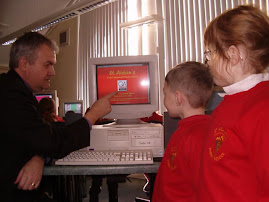_JPG.jpg)
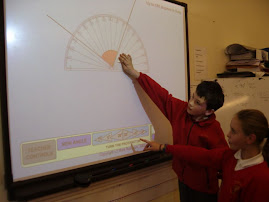_JPG.jpg)
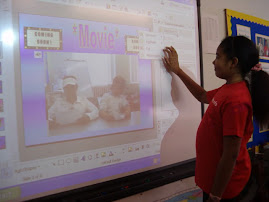_JPG.jpg)
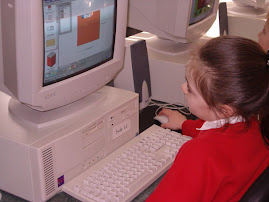_JPG.jpg)
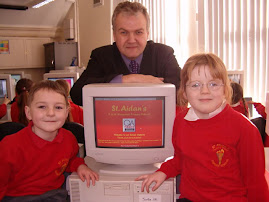_JPG.jpg)

No comments:
Post a Comment